



Right since the day he opened his first famous café, Mocha – Coffee & Conversations, in Mumbai’s Churchgate neighbourhood, restaurateur Riyaaz Amlani - the founder of Impresario Handmade Restaurants - has been introducing new dining and bar formats to India. Along the way he had discarded anything that seemed dated or not in keeping with the current times and mood.
It does not surprise me, then, that the first of India’s COVID-19-ready restaurants and bars—Dwarka SOCIAL (Delhi) and Elante SOCIAL (Chandigarh) are the results of his constant affinity for upping the game.
As Sanchit Arora, Studio Head Architect - Renesa Architects, who designed Dwarka SOCIAL, says, “Only Riyaaz, who I have worked with before, could think of the ‘Social with distancing’ concept. It is a clever way to play not just with words but also formats, in a bid to make people feel secure about sanitation and safety, even as they get back to living what can be normal in such times. We call it a space conceptualised pre-pandemic, designed during and for the pandemic, and sustainable beyond the pandemic.”
Amlani reveals that both the outlets have been in works before the pandemic devastated the economy. “They were meant to open in May, but then the government locked down the country. We worked through this period to change the design language. I believe that COVID is here to stay for a long while, and the only way to get back to life is to adapt to these times and change the way we play the game. We are not going to see crowded bar nights, at least for now. People are not going to be able to hang around the bar. But they will come in to enjoy the night, the SOCIAL vibe, and the company of their friends and family.”
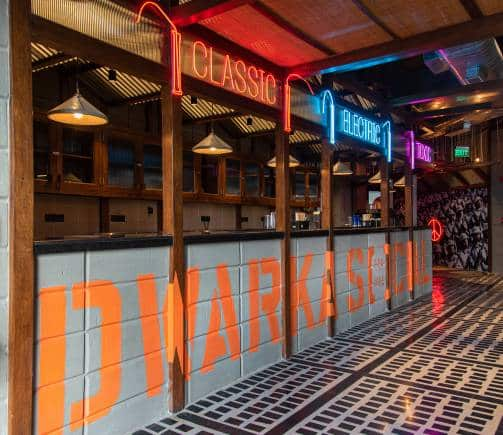
Designing a restaurant in response to a pandemic
By now we know the protocols: Social distancing, six feet distance, et al. But how do you achieve this through design? Dwarka SOCIAL offers a good prototype. Arora reveals that the design is based on the street and alleyway shops of Vietnam. “It is located on the fifth floor of a mall in Dwarka. You enter through an alley and then it blasts off into a bigger space. We have created nooks and niches or booths in the alley, each designed like a shop you may find in a Vietnamese market, say a medical shop or a watch store. Each of these booths can seat a group of people, who are separated from the rest.”
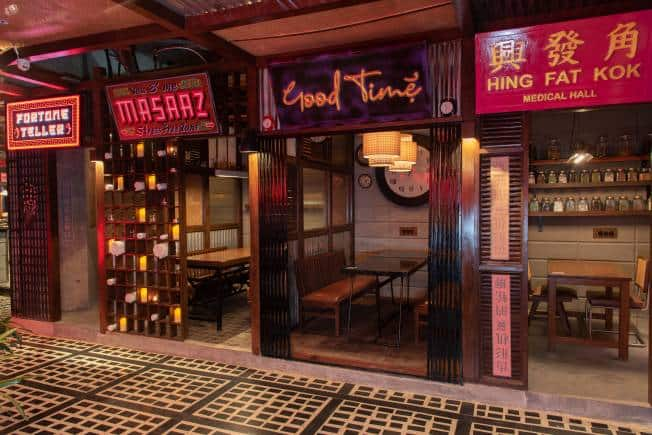
The booths resemble small shops and parlours painted with striking colours and, as befits SOCIAL, with wacky names, transporting you to a bustling street in Saigon, albeit with social distancing. The second zone has staggered seating dotted with split-level booths, or enclosed spaces stacked on top of each other, resembling the signature ‘Pay and Stay’ housing structures of Ho Chi Minh city.
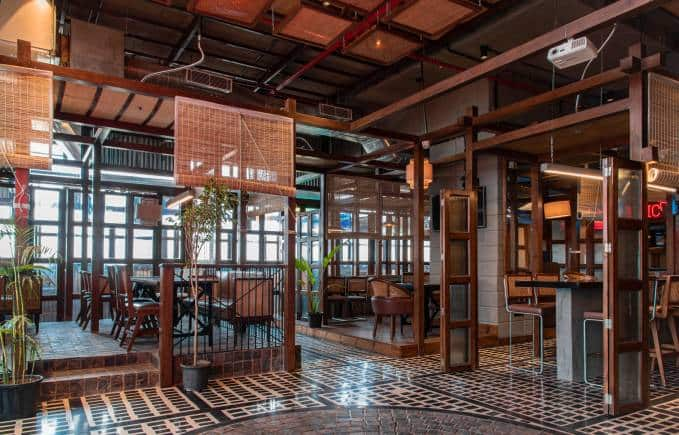
The third zone, the long community table—the soul of every SOCIAL—continues to exist but in a transformative way. So, Arora adds, the seating on the community table is separated by a foldable bamboo structure or chick blinds. “Natural wood and bamboo chick blinds give the outpost a warm embrace, while an abundance of plants ensures that the greens are never out of sight. Expansive windows let in tons of natural light, ensuring that the space is both welcoming and relaxed.”
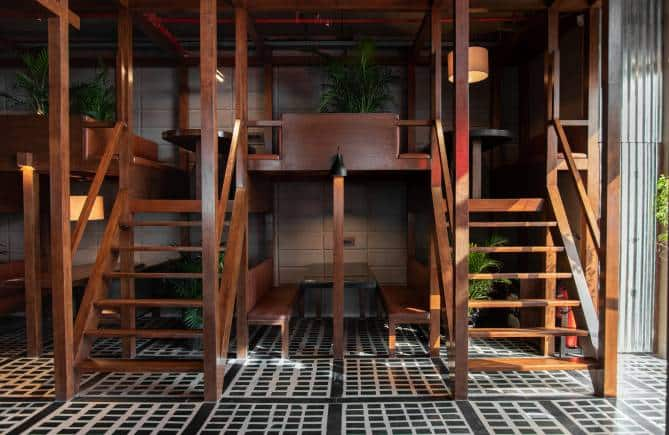
With partitions strategically placed at six-foot nodes, the outpost is divided into several zones. The entire space is malleable, with flexible doors and blinds that can be opened or closed according to the needs of people seeking more privacy or division from others. “The entire point of communing now is about ‘coexisting’ and not ‘overlapping’. In terms of the materials used, we’ve natural wood, rice bricks and corrugated steel sheets. Natural concrete lights have also been sourced especially for this outpost.”
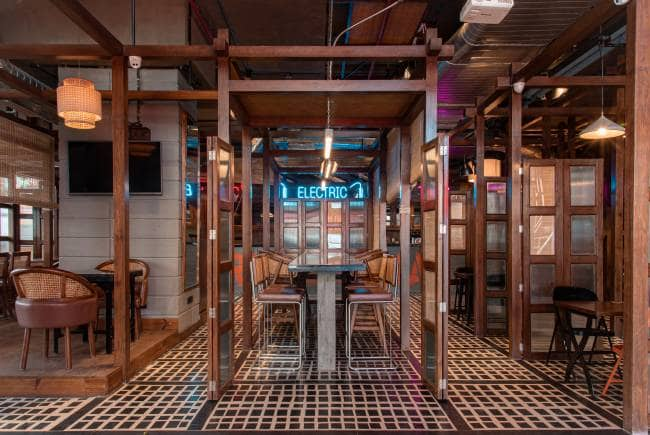
How profitable is a restaurant designed for COVID-19 times?
Most restaurateurs are clear operations are unlikely to be profitable with just 50 percent occupancy, the capacity most states are right now ready to allow. Amlani says his two new outposts have profitability written into the design code.
Dwarka SOCIAL sprawls over 4,300sq.ft. In normal times, it would boast 138 covers (or tables). Designed as a response to a pandemic, it now has 126 covers, just about 12 less. “In these two outposts, we have ensured that we design the outposts in a way that it creates spaces of isolation, as per guidelines, but there is enough footfall to make it profitable. Add to that our format of ‘Work from Social’ that has attracted traction from people tired of working from home, the leaner menu, the socially distanced kitchens which means lesser staff, a supervisor on the floor and not too many waiters, and the double-down on home deliveries, besides helping people host parties at their homes, and I think we are primed to create a whole new format of dining.”

Amlani says he has seen a 300 percent increase in home deliveries, proving that new formats such as D.I.Try Kits (recreate classic SOCIAL dishes at home via DIY meal kits), #Mixers (SOCIAL’s signature cocktails at home using its pre-mixes), and #SOCIALPartyStarter (a package deal of #eats + #drinks for a house part of six or more, along with a curated playlist and a bartender sent home), work in such times. “Besides, in cities such as Chandigarh, we are seeing a flow of corporate executives, tired of Work from Home, coming in and using SOCIAL Works, a concept that’s designed to provide a safe and dependable workspace.”
As restaurants—besieged by the long lockdown and zero revenues—open up, exciting new formats launched by the pioneers in the business are likely to emerge.
Deepali Nandwani is a journalist who keeps a close watch on the world of luxury.
Discover the latest Business News, Sensex, and Nifty updates. Obtain Personal Finance insights, tax queries, and expert opinions on Moneycontrol or download the Moneycontrol App to stay updated!
Find the best of Al News in one place, specially curated for you every weekend.
Stay on top of the latest tech trends and biggest startup news.